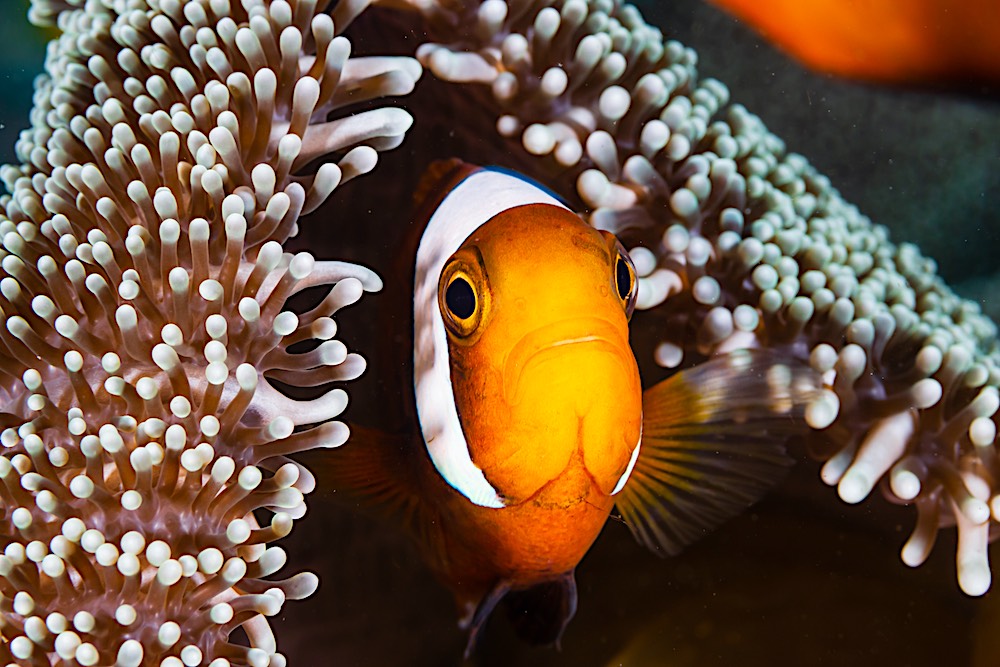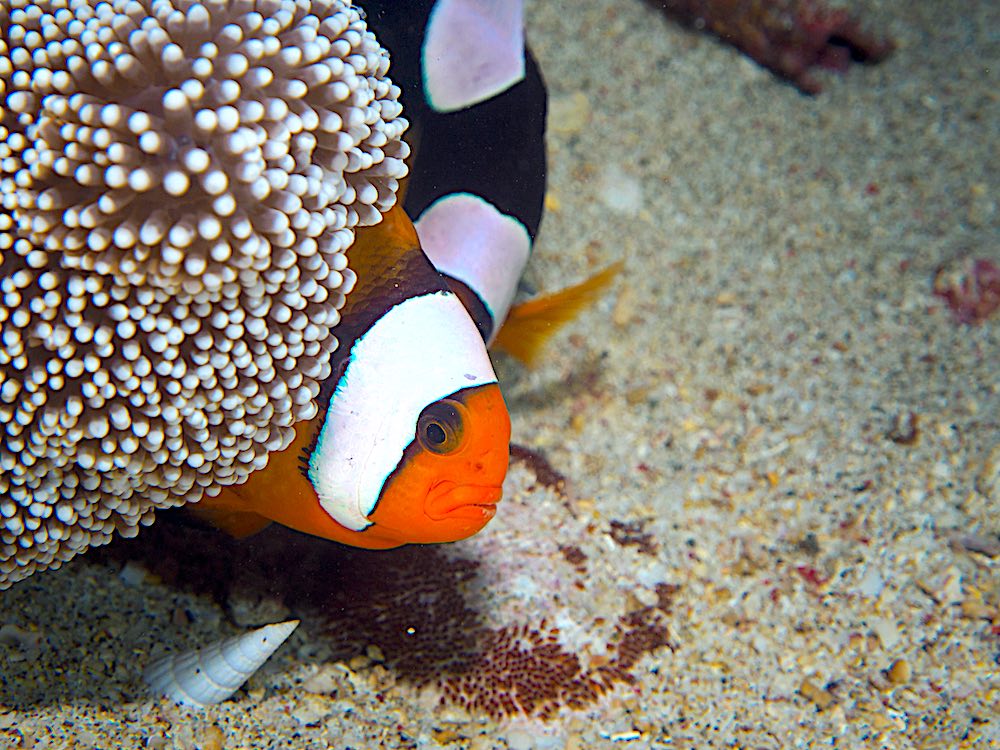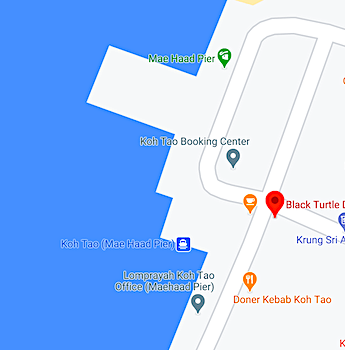Saddleback Clownfish & Sea Anemone Koh Tao
Learn about Saddleback Clownfish & Sea Anemone on Koh Tao
Other than being one of the most difficult words to pronounce, the Sea Anemone is a fascinating half plant half animal creature.
When you add a Clownfish into the mix, they are both high up on the list of the most beautiful creatures to look at in the sea around Koh Tao.

Where to find Clownfish and the Sea Anemone on Koh Tao
In Koh Tao with an abundance of marine life, the most common Clownfish are the Saddle Back Clownfish and Pink Skunk Clownfish.
Pink Skunk Clownfish and their Anemones can be seen all around Koh Tao and especially form on top of rocks and rock pinnacles.
Twin Peaks, Southwest pinnacle and Chumphon pinnacle are covered in them.
The Saddleback Clownfish likes more of a relaxed and quiet atmosphere and looks for Anemones in more sandy areas.
Aow Leuk and Junkyard Reef are more suitable and of course our local Koh Tao celebrity Nemo lives at Twin Peaks dive site.

How to identify the Clownfish and the Sea Anemone
Pink Skunk Clownfish have a peach orange coloured body with a small white stripe behind their eyes.
They have one more, slightly larger white stripe running down the entire length of their backs from the nose to their caudal fin (Tail fin).
Saddleback Clownfish are a more orange-brown coloured fish that has white patches on its back, saddle and at the tip of its tail and they also have one single white stripe from their forehead to their chest.
Saddleback Clownfish is an Orange Brown Color
Sea Anemones come in a range of sizes and colour however, they are still very easy to distinguish.
Closely related to Jellyfish and Coral they are actually stinging Polyps.
The body of the Sea Anemone is made up of an adhesive pedal disc that is used to swim (yes, they can move) and also used to to attach itself to rocks or the sea bed.
They have a cylindrical shaped body and a vast array of venomous filled tentacles surrounding their mouths in the centre.
Clownfish and the Sea Anemone Characteristics & Behaviour
There are over 1000 species of Anemones and over 25 species of Clownfish and out of all of these possibilities only a few can form a mutually beneficial relationship known as Symbiosis.
Lucky for us as scuba divers, they are both the Saddleback Clownfish and Pink Skunk Clownfish and they both flourish in the warm, tropical sea around Koh Tao.
In fact, they are such a good match for each other that they highly depend on each other for survival.
Symbiotic Relationship
Clownfish are born with a thick layer of mucus, which gives them a safe passage through the Anemone and prevents them from being stung.
This poisonous palace is the perfect living space for the Clownfish as they rarely have to worry about any nearby predators.
In return the Sea Anemone is cleaned by the Clownfish and is provided with nutrients from any remaining scraps of food that are left over.
Interesting facts about the Clownfish and the Sea Anemone
Some Sea Anemones can fire stinging filaments called Nematocysts to help stun their prey.
One particular Sea Anemone can eat its prey whole whilst others can live as old as fifty (50) years.
Sea Anemone Poisonous Tentacles
Recent studies have shown that during the night the Clownfish actually help the Sea Anemone to breathe.
Sea Anemones are limited in their ability on their own to increase water movement across their body to help them oxygenate.
However, one study has shown that by slowing opening and closing it caused the Clownfish to move around to find space, which in turn moved the tentacles of the Sea Anemone and helped them increase their Oxygen level.






